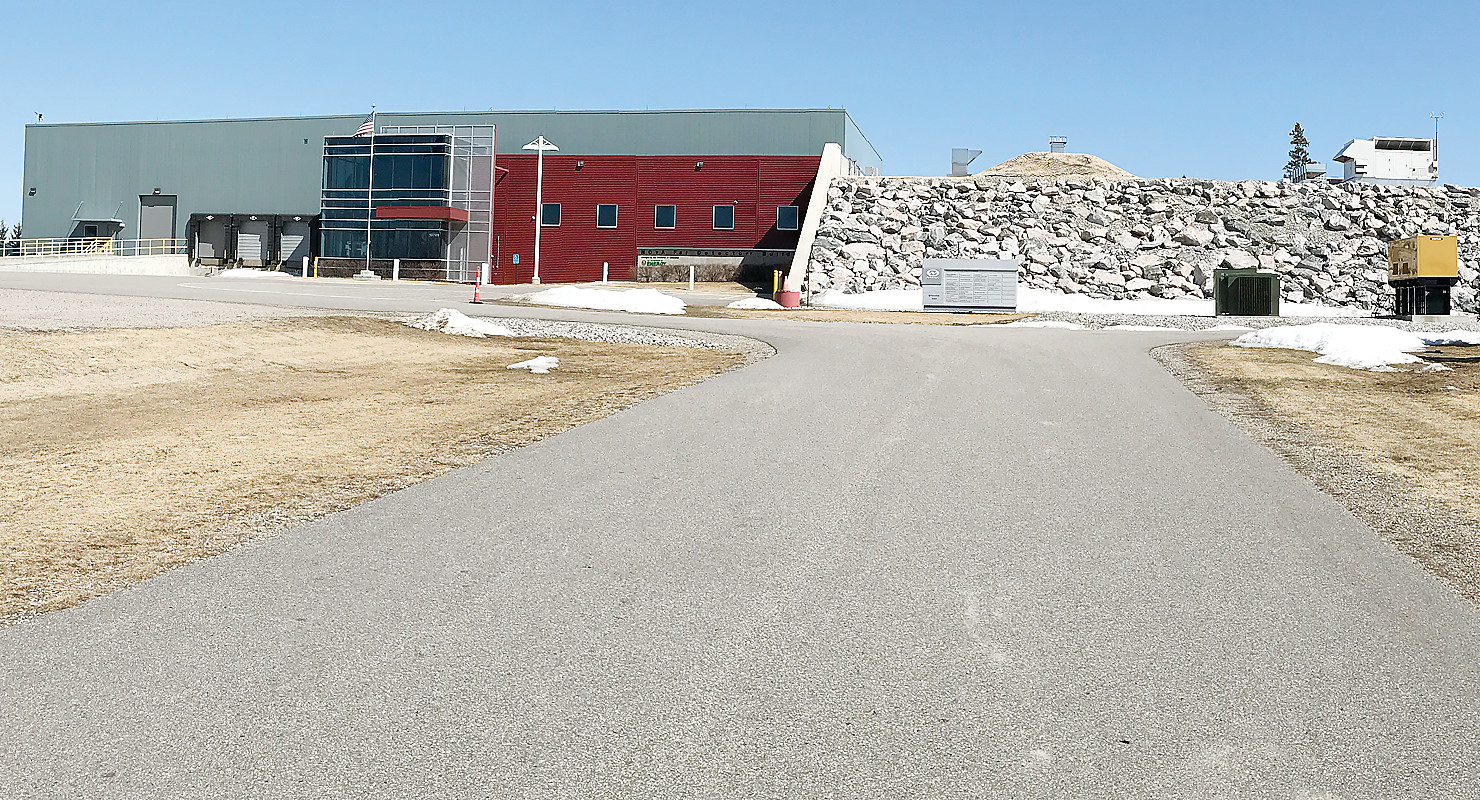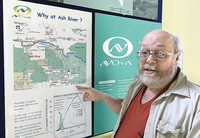Support the Timberjay by making a donation.
Big bucks, bigger ideas
Bill Miller translates theories of physicists into real-world experiments
SH RIVER— When a theoretical physicist hatches an idea to test a new and ethereal theory on the nature of the universe, it’s up to Bill Miller to figure out how to convert theory to nuts, bolts, …
This item is available in full to subscribers.
Attention subscribers
To continue reading, you will need to either log in to your subscriber account, or purchase a new subscription.
If you are a current print subscriber, you can set up a free website account and connect your subscription to it by clicking here.
If you are a digital subscriber with an active, online-only subscription then you already have an account here. Just reset your password if you've not yet logged in to your account on this new site.
Otherwise, click here to view your options for subscribing.
Please log in to continue |
Big bucks, bigger ideas
Bill Miller translates theories of physicists into real-world experiments
ASH RIVER— When a theoretical physicist hatches an idea to test a new and ethereal theory on the nature of the universe, it’s up to Bill Miller to figure out how to convert theory to nuts, bolts, buildings, and electronic wizardry.
Miller has come a long way since he started as a temporary laborer over 32 years ago, in the early days of the neutrino research at the Soudan Mine. It was supposed to be a four-to-eight week hitch, and it became a career. He later become lab manager at the Soudan II facility and was subsequently put in charge of construction of the Main Injector Neutrino Oscillation Search (MINOS) detector at Soudan. That research may have come to an end with the shutdown of the detector last year, but Miller is on to bigger, better, and far more expensive experiments.
He spends most of his time these days up on the Ash River Trail, overseeing the operation of the massive NOvA neutrino detector, the construction of which he oversaw as well.
The facility itself is massive and sits surrounded by miles of untrammeled forest just south of Voyageurs National Park. It’s partially submerged in a big hole blasted into the Canadian Shield back in 2008. The detector itself weighs 15,000 tons and is made from 350,000 white PVC tubes glued together into a giant block that’s nearly the length of a football field and measures more than five stories tall— making it the largest self-supporting plastic structure on Earth. And each tube is filled with mineral oil and a small amount of a chemical that emits light whenever a neutrino interacts with any of the atoms of liquid within. Each tube is strung with fiber optic strands to transfer the little burst of light to an incredibly complex array of electronics and computers that record the event.
It cost $200 million to build and was necessary, according to the physicists who understand such things, to better monitor the beam of neutrinos that emanates from the Fermilab particle accelerator outside Chicago. Like a shotgun blast, the beam spreads out as it travels. The center of the beam is aimed at the now-dismantled MINOS detector at Soudan, while the NOvA detector sits on the outer edge of the beam. That’s where physicists expected to find more electron neutrinos, assuming their theory of neutrino oscillation held true. It turns out that the work at MINOS and now at NOvA has confirmed that neutrinos can change, or oscillate, between different forms, primarily electron and muon particles. If that’s all Greek to you, join the club. The bottom line, which is perhaps a bit more understandable, is that it means neutrinos have mass. For years, scientists weren’t sure, in part because these tiny sub-atomic particles are incredibly tough to study. They move about the universe at the speed of light and rarely interact with solid objects. There are thousands of them passing through all of us every second of the day. Yet, if they have mass, physicists say they could account for much of the “missing” matter in the universe. Physicists say that the motions of stars and galaxies don’t make sense with the amount of visible matter in the universe, so they surmise that particles like neutrinos may account for some of the matter that they can’t see, but that gravitational forces suggest has to be there.
Bringing lofty
concepts to earth
Wanting to learn more about neutrinos is one thing. Figuring out how to do it was the challenge. First, scientists had to figure out how to “catch” them, which meant putting huge amounts of mass directly in the path of a focused neutrino beam that emits a pulse of billions of the tiny particles every 1.7 seconds.
About once a week, a single neutrino from that beam will actually hit something solid, like an atomic nucleus, in the NOvA detector and when that happens it creates a tiny burst of light that miles and miles of fiber optic cables hooked to an array of incredibly complex electronics can then record for science. Each type of neutrino has its own signature, so it allows researchers to determine the variety by the type of interaction the detector records.
While the University of Minnesota actually operates the NOvA detector, it’s really a collaboration of 38 different research institutions, with most of the funding coming from the Department of Energy. They’ve been operating the detector for three years now and current plans call for another six years of operation, depending on funding.
But even as he and a small team tend to the operations of the NOvA detector, Miller is spearheading construction planning for the next generation neutrino detector, known as the Deep Underground Neutrino Experiment, or DUNE. He’s assembling the earliest prototype right now within an unused portion of the NOvA building. And he, along with his co-worker Curt Lerol, of Lake Vermilion, leave next week for talks at the CERN laboratory outside Geneva, Switzerland, on the development of a larger prototype of the DUNE detector. Come June, Miller will move to Switzerland for nine months while he helps oversee construction of that larger version. And that’s still just a prototype of the final DUNE detector, which is scheduled to eventually be built 4,850 feet down in the Homestake Mine, near Lead, S. D.
That massive new detector, with a total price tag estimated at $2 billion, will be developed by one of the largest scientific consortiums ever assembled. “There are 168 countries involved,” said Miller, along with a thousand engineers and technicians.
That, of course, assumes that the money can be found.
Miller, who lives on Everett Lake, north of Ely, with his wife Deb, doesn’t see as much of the homestead as he expected when the two of them first moved to the area.
He travels frequently, and is often gone for weeks or months at a time. For the past few years, he sleeps weekdays in a small cabin at the end of the Ash River Trail and returns home only on the weekends. He’s still recovering from ankle surgery and the two months he spent recuperating was the longest stretch he’d spent at home in decades.
Now, with the biggest project of his career nearing lift-off, he’ll be back on the road. He said he’s tried to convince Deb to join him in Switzerland, but she seems content to stay in the northwoods.
While work on the prototype at CERN is already funded, Miller said there is a lot of uncertainty within the science community about what the future holds under the Trump administration. While the new president hasn’t weighed in on the final DUNE detector, the budget outline he submitted to Congress includes major reductions at the Department of Energy. And President Trump has proposed similar cuts at other science-related agencies and departments. “At this point, we just don’t know,” said Miller. And without funding, Miller’s work of turning theories into real science for physicists could grind to a halt.









